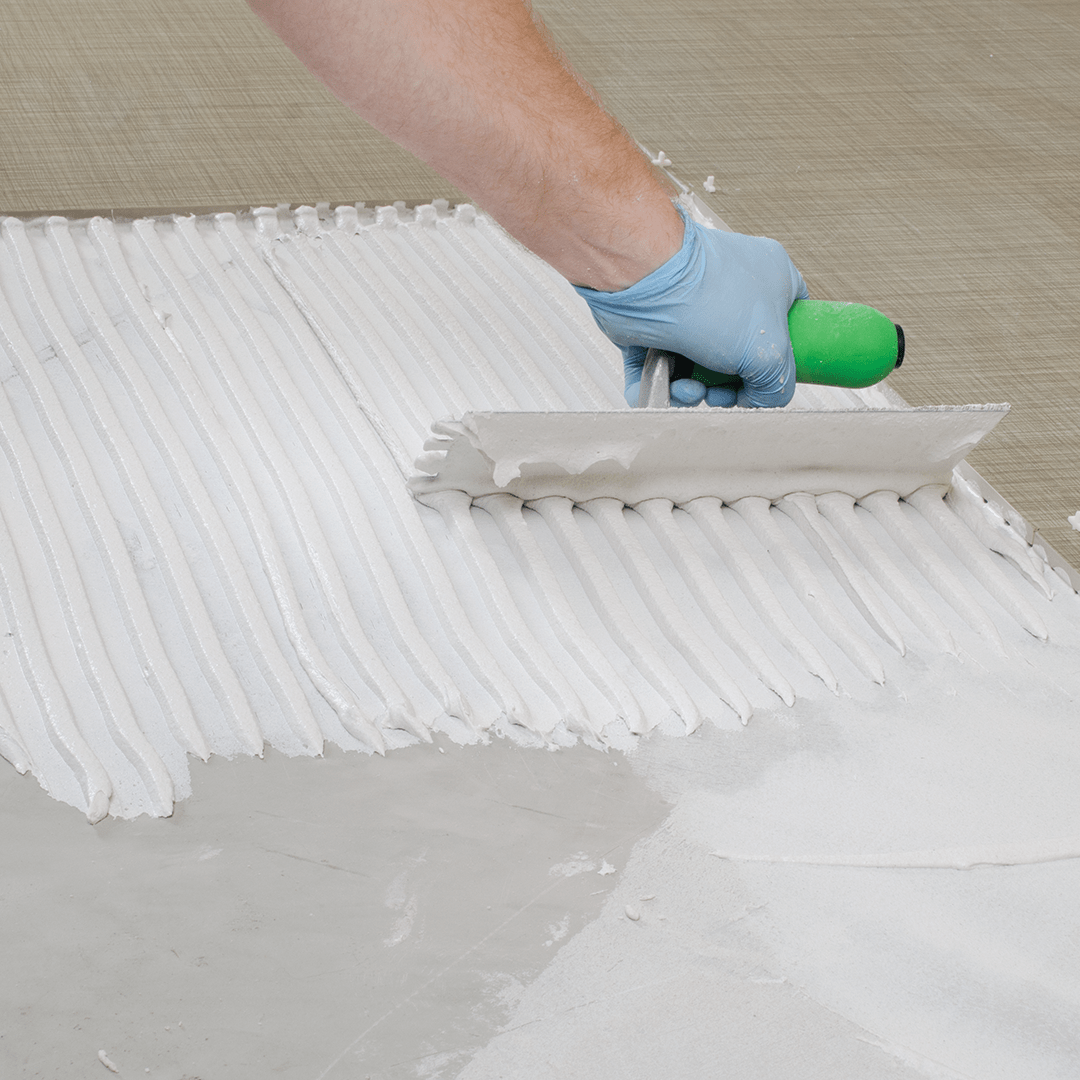Tile floor installations can be a beautiful addition to any home or building, but in order for the installation to look its best, it’s important to select the right mortar and grout products. Here are some tips and guidelines to select the right mortar and grout for your project.
Mortar
Mortar is the adhesive used to bond tiles to the subfloor material. There are two main types of mortar: thinset and medium bed. Thinset mortar is generally used for tiles that are not considered large format, while medium bed is used for tiles that are large format. Today’s definition is that a tile with any edge longer than 15” is considered a large format tile.
Medium bed mortar will set thicker to support the weight of the large format tile and will provide a thicker layer than thinset. Thinset can shrink if applied too thick causing lippage and tipped tiles or lack of coverage.
Grout
Grout is used to fill the spaces between tiles. There are a few different types of grout which all have different primary uses. There is cementitious grout that comes Sanded, Unsanded and Premium fine aggregate sanded. There is also Acrylic and Epoxy Grout.
Sanded grout is a mixture of Portland cement, sand and water-resistant additives. It is good for use in areas that will be exposed to moisture, as the sand in the grout helps to prevent cracking. Best for grout joints 1/8” to 5/8”.
Un-sanded grout is a mixture of Portland cement and water-resistant additives. Because this has no aggregate it can’t be used in thicker grout joints. It is typically used when you need 1/8” or smaller grout joints. Used with glass, polished marble or metal to avoid scratching the surface during installation.
Premium sanded grout is the most popular choice. This is a high-performance grout with technology built into it to provide more color consistency, stronger, and more stain resistant grout joints. Ideal for high-traffic residences, meets higher standards for shrinkage, water absorption, and strength. The aggregate is much finer meaning that the grout can be installed down to 1/16”.
Acrylic grout is a single component grout that is pre-mixed and ready to use. It shares many of the benefits of epoxy grout: it has excellent color consistency, doesn’t need to be sealed, resistant to breakage and chemicals, resists mold and mildew, is stain resistant, and doesn’t effloresce. Not to be used in steam showers and can break down with chemicals.
Epoxy grout typically has two or three components that need to be mixed. The real strengths of epoxy grout are water absorption, strength, and chemical resistance. Epoxy absorbs about 50-times less water than traditional cement grouts, has double the strength, and chemical resistance that stands up to even the toughest environments. Epoxy grout is a reactive grout that when mixed together it begins a chemical reaction that gives epoxy all its best qualities. Mixing also starts the grout setting up, so it must be applied quickly in small batches, especially in the summer in hot temperatures. Even tile contractors can have difficulty with epoxy grout so it’s best to have a lot experience installing with epoxy for best results. It is a technique you can practice during down times.
Color Matching
When selecting grout, it’s important to consider the tile color. Grout color can be somewhat a matter of taste. If you have a tile with several shades, you have several options to choose from for grout color. Choosing lighter colors blends your design together. Darker colors create a more dramatic effect. Picking a grout that matches the tile color as closely as possible helps create a seamless look that blends the grout and tile together. On the other hand, picking a contrasting grout accentuates the tile size, design, or pattern
In summary, selecting the correct mortar and grout is an important part of any tile floor installation. Thinset and medium bed mortar are used for different sizes and thicknesses of tile. While selecting the right grout can create the look you are looking for while performing to the needs you have. By following these guidelines, you can ensure that your tile floor installation will look its best, last for years to come and make you or your customers happy.

